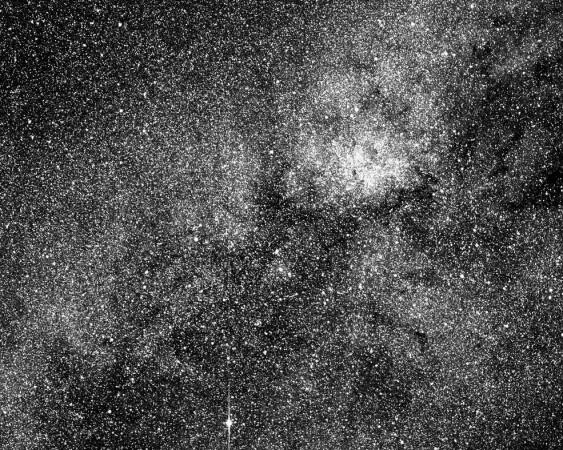
NASA's next space telescope, called the Transiting Exoplanet Survey Satellite (TESS) that will look for new worlds, has taken its first sample image of the cosmos as it completed a lunar flyby and gravity assist last week as it passed just over 8,000 km near the Moon.
A "science-quality" image, also referred to as a "first light" image, is expected to be released in June, says NASA.
TESS's cameras were then turned on to make a two-second test exposure shot as part of camera commissioning, according to a release by NASA. This image was shot using just one of TESS's four cameras. The photograph is centred around on the southern constellation Centaurus and shows well over 200,000 stars, notes the report.

NASA explains that the edge of the Coalsack Nebula is in the upper right corner and the bright star Beta Centauri is seen at the lower left edge of the image. Once TESS is fully functional, over 400 times as much sky will be surveyed using four cameras for two years.
After a final thruster burn is scheduled for May 30, notes the report after which the telescope will be placed in a highly elliptical science orbit around Earth. The orbit has been chosen to specifically maximise the amount of night sky the telescope can look at, explain NASA. TESS will continue to monitor large swaths of the cosmos throughout its mission years. Science missions for TESS will begin in June after it settles on its orbit and after camera calibrations are done.
Once TESS is in place, it is expected to find thousands of exoplanets in its time in the sky. The James Webb Telescope, awaiting launch in 2020, will make follow-up observations, notes NASA. The idea is to find potentially habitable planets around other stars by looking for a drop in the light coming from them caused by transiting planets between TESS and the star.
TESS was launched on April 18 by SpaceX after the initial launch was put off by two days.
If just the sample image is so spectacular, one can only imagine what kind of pictures TESS will be capable off when it is fully functional. Seeing images from Chandra, Hubble, and other space telescopes, TESS's images are also likely to be just as breathtaking, if not better.















